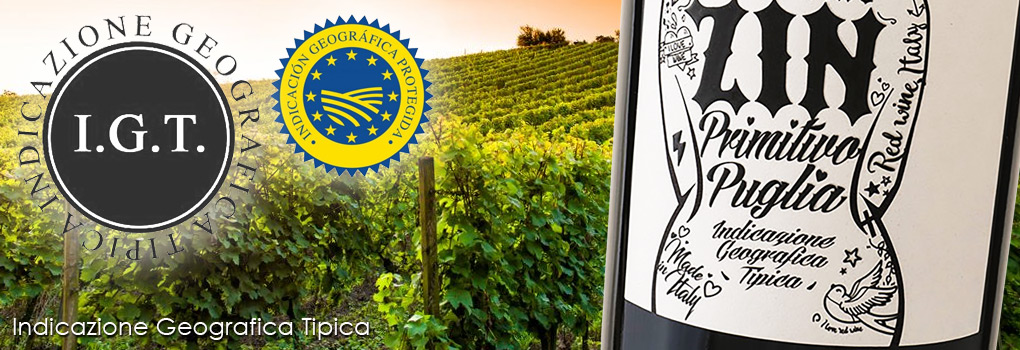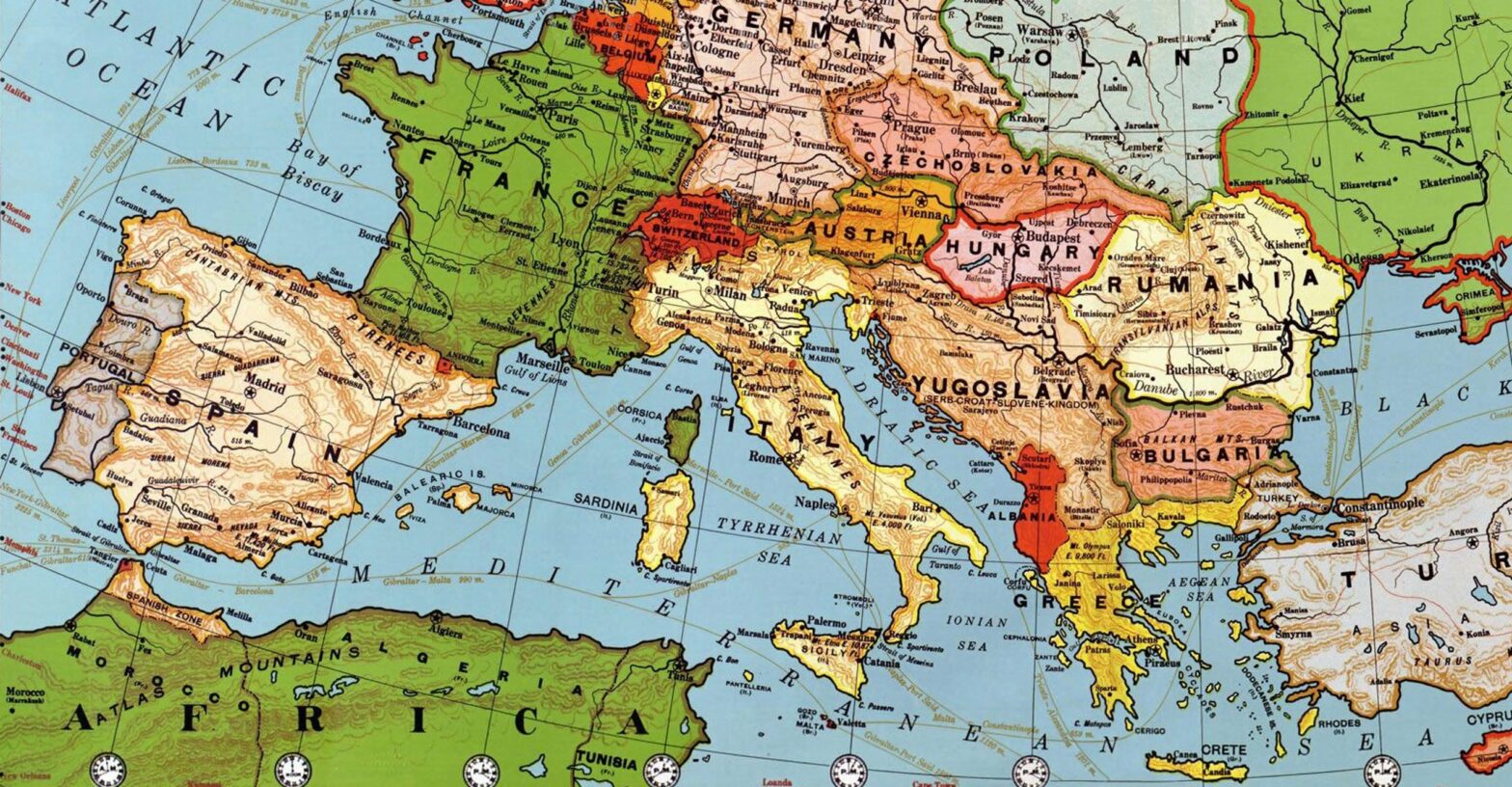AOC:
Appellation d'Origine Controlee (AOC), which translates as 'controlled designation of origin', is the French certification granted to certain French geographical indications for wine, cheese and other agricultural products, all under the control of the Government Bureau 'Institut National des Appellations d'Origine' - (INAO).
The French system of appellations, began in the 1930's and is considered the wine world's first standard. To carry an appellation in this system, a wine must follow strict rules describing; the area the grapes are grown, the grape varietals used, their level of ripeness, the minimum alcohol strength, vineyard yields and the methods used in growing the grapes, vine density limits and the making, ageing of the wine.
There are hundred's of French geographically defined appellations, that can cover entire regions, individual villages or even specific vineyards, AOC's can vary dramatically in size.
A meticulous set of clearly defined standards, stress that AOC wines will be produced in a consistent and traditional manner with ingredients from specifically classified producers in designated geographical areas. The products must further be aged at least partially in the respective designated area of production.
AOC products can be identified by a unique seal, which is printed on the wine label. This strict label policy can lead to confusion, especially in cases where towns share names with appellations. While the process of label approval is enforced to the nth degree, the quality control for the wine in the bottle is much less strict. While a blind taster must approve the wine for it to receive AOC classification, this tasting often occurs before the product is even bottled, and by a local expert who may well have ties to the winery. Even if the taster is objective, the wine sample may not be representative of the final product, and there is almost no way to verify that a finished bottled wine is the same as the original AOC sample.
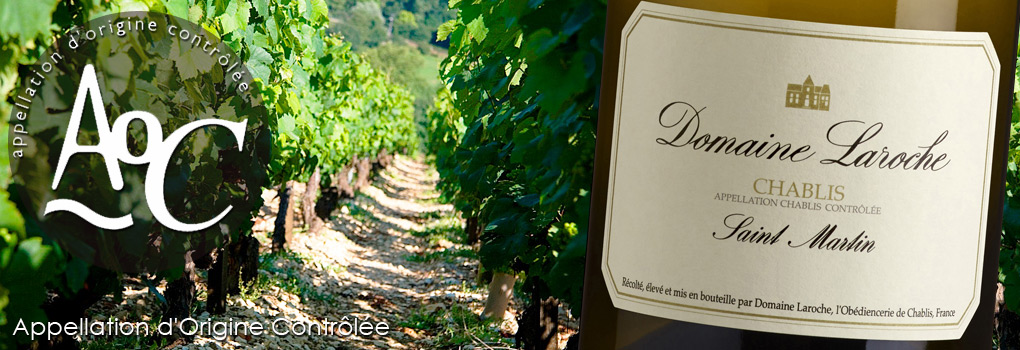
AOP:
The French AOC Wine Classification System had been under serious review since early 2006, with a new system introduced in 2012. The new system consists of 3 categories rather than the previous 4, as there is no category corresponding to VDQS since 2012.
The New Categories:
• Vin de France: a table wine category basically replacing 'Vin de Table', but allowing grape varietal and vintage to be indicated on the label. Vignobles de France, which means 'Wines from France'. This designation incorporates all wines that do not fall into the other two categories and has no geographical indication at all. As wines can be blended from any specific area.
• Indication Géographique Protégée (IGP): an intermediate category basically replacing 'Vin de Pays'. Wine with a Protected Geographical Indication - Wines will be made from: A specific region, selected grapes, limited yields, minimum and maximum alcohol content. While 'terroir' still plays a key role with this designation, its central role has declined, due to reduced requirements. *(2017: IGP wines account for approximately 33% of total production)
• Appellation d'Origine Protégée (AOP): the highest category basically replacing AOC wines. Wine with a Protected Appellation of Origin. All of the stringent AOC requirements remain in place. The singular focus on 'terroir' continues to be at the core of this designation.
The largest changes will be in the 'Vin de France' category, and to VDQS wines, which either need to qualify as AOP wines or be downgraded to an IGP category. For the previous AOC wines, the move to AOP will only mean minor changes to the details of the wine label, while the actual names of the appellations themselves will remain unchanged.
While no new wines were marketed under the old designations from 2012, wine bottles already in the market place, were not be required to be re-labeled. *(2017: AOP wines account for approximately 45% of total production)
The new AOP system has been adopted by all EU member countries over the past few years. For example; the Italian 'Denominazione di Origine Controllata' (DOC) classification has become the 'Denominazione di Origine Protettivo' (DOP) in recent years.

D.O. Wine System - Spain:
Spain developed their Denominación de Origen (D.O.) wine system in 1932, and it has been updated several times to reflect improved quality. The system has similarities with the rating Appellation d'Origine Protégée (AOP) system of France, Portugal's Denominação de Origem Controlada (DOC) and Italy's Denominazione d'Origine Protetta (DOP).
Spain has around 80 quality wine regions under some form of geographical classification. In addition there is Denominación de Origen Calificada (DOCa or DOQ in Catalan) status for DOs that have a consistent track record for quality.
There are currently three DOCa / DOQ regions: Rioja, Priorat and Ribera del Duero. Each D.O. has a Consejo Regulador, which acts as a governing control body that enforces the D.O. regulations and standards involving viticultural and winemaking.
These regulations govern everything from the types of grapes that are permitted to be planted, maximum yields that can be harvested; the minimum length of time that the wine must be aged and what information is required on the wine label. Wineries that are seeking to have their wine sold under D.O. or DOCa status must submit their wines to the Consejo Regulador laboratory and tasting panel for testing and evaluation. Wines that have been granted DO/DOCa status will feature the regional stamp of the Consejo Regulador on the label.
Following Spain's acceptance into the European Union, Spanish wine laws were brought in line to be more consistent with other European wine systems. One development was a 5-tier classification system that is administered by each independent region. Non-independent areas or wine regions whose boundaries overlap with other independent communities (such as Cava, Rioja and Jumilla) are administered by the Instituto Nacional de Denominaciones de Origen (INDO) based in Madrid.
The 6-Tier Wine Classification System of Spain includes:
• Vino de Mesa (VdM) - These are wines that are the equivalent of most country's table wines and are made from unclassified vineyards or grapes.
• Vinos de la Tierra (VdlT) - This level is similar to France's vin de pays system.
• Vino de Calidad Producido en Región Determinada (VCPRD) - This level is similar to France's Vin Délimité de Qualité Supérieure (VDQS) system and is considered a stepping stone towards DO status.
• Denominación de Origen (DO) - Nearly two thirds of the total vineyard area in Spain is within the boundaries of a DO region.
• Denominación de Origen Calificada (DOCa / DOQ) - This designation, which is similar to Italy's Denominazione di Origine Controllata e Garantita (DOCG) Rioja was the first region afforded this designation in 1991 - then Priorat in 2003 and Ribera del Duero in 2008.
• Vino de Pago (VP) - this designation is for individual single-estates with an international reputation - there are currently 14 estates with this status.
*(2017: IGP wines account for approximately 22% & DOP wines 78% of total production in Spain)

DOCG:
In 1980 the Italian wine authorities established a superior classification to DOC wines. Denominazione di Origine Controllata e Garantita (DOCG) began with 5 wines, Brunello di Montalcino, Vino Nobile di Montepulciano, Chianti, Barolo and Barbaresco, both produced in Piedmont. All had recognised international reputations, and had been produced for centuries. There are currently 77 wines that have been awarded the prestigious DOCG status.
A DOCG wine must meet standards that are much stricter than those stipulated in DOC regulations. One of the principal differences is the lower yields imposed. The reductions in output have probably done more to improve the quality of the wines than any other condition in the production.
The strict rules also require an in-depth chemical analyses for all DOCG produced wines. Laboratories designated by the government must carry out the examinations of the wines physical composition.
Once the analyses have demonstrated that the chemical properties are in accordance with the standards specified in the DOCG regulations, committees of expert tasters sample each producer's wines. The committees can reject wines that fail to meet the specified sensory standards or instruct the producers to take steps to remedy deficiencies before approving or discarding the wine.
Upon receipt of a favourable report on the outcome of this analysis, the producers' consortia issues small sequential numbered seals that fit over or around the top of the bottles of DOCG wines. Strict controls are applied to ensure that the number of seals issued corresponds to the amount of wine that can be produced in accordance with the regulations.
Today, within the DOC and DOCG wine zones well over 2000 different styles of wine are produced - *(2017: DOC / DOCG wines accounts for approximately 40% of total production). The extensive preparations the wine producers who apply for DOCG recognition must make are time consuming and require substantial investment. These strict controls placed on DOCG wines, ensures that what finally is produced and served to with enthusiasts all over the world, is of the finest quality wine from Italy.
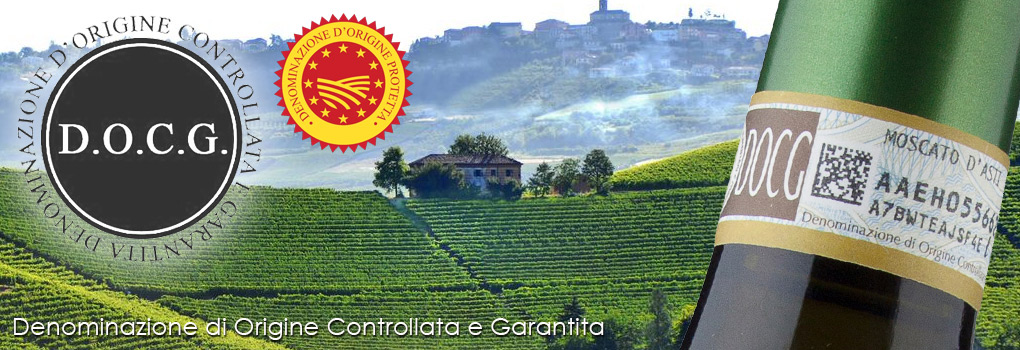
DOP Wine Classification:
• DOP - Denominazione di Origine Protetta: or ‘Protected Denomination of Origin’. This is the top tier of Italian wine classifications. Wines that are assigned the DOP denomination must be produced exclusively in very limited and strictly defined areas.
Their quality and properties are significantly or exclusively determined by their environment, in both natural and human factors. The category is named Appellation d’Origine Protégée (AOP) in French, Denominazione di Origine Protetta (DOP) in Italian and Denominación de Origen Protegida (DOP) in Spanish. The goal of the new DOP Classifications are to guarantee consumers that the products they buy and serve on their tables are exactly the ones specified on the label, including their regional origin.
The first official Italian system for the classification of wines was released in 1963. Since, several modifications and additions to the legislation have been made. In 2010 the four wine levels / categories were established, which are consistent with the last EU regulation in relation to wine, launched in 2008-2009.
• Vini DOP (Wines with Protected Designation of Origin): This category includes two sub-categories, Vini DOC (Controlled Designation of Origin) and Vini DOCG (Controlled and Guaranteed Designation of Origin).
DOC wines must have been IGP wines (Protected Geographical Indication) for at least 5 years. Typically they come from smaller regions, within a certain IGP territory, that are particularly planted for their climatic and geological characteristics and for the quality of the local winemaking traditions. They also must follow more strict production regulations than IGP wines.
A DOC wine can be promoted to DOCG if it has been a high quality DOC for at least 10 years. In addition to fulfilling the conditions for DOC wines, before the introduction of a new DOCG wine, they must pass stricter analyses, along with including a tasting by a specifically appointed committee. As of 2016 there currently exists: 334 DOCs and 77 DOCGs - for a total of 408 DOPs in Italy.
A number of sub-categories also exist regulating the production of sparkling wines (e.g. Vino Spumante, Vino Spumante di Qualità, Vino Spumante di Qualità di Tipo Aromatico, Vino Frizzante).
Within the DOP Category, 'Classico' is a wine produced historically in the oldest part of the protected territory. 'Superiore' is a wine with at least 0.5% more Alc/vol than its corresponding regular DOP wine and produced using a smaller approved quantity of grapes per hectare, yielding a higher quality. 'Riserva' is a wine that has been aged for a minimum period of time before release, depending on the typology (red, white, Methode Traditionnelle, Method Italiano sparkling). Sometimes, 'Classico' or 'Superiore' are themselves part of the name of the DOP (e.g. Chianti ‘Classico’ DOCG or Soave ‘Superiore’ DOCG).
Unlike France, Italy has never had an official classification of its best wine 'crus'. Private initiatives like the Comitato Grandi Cru d'Italia (Committee of the Grand Crus of Italy) and the Instituto del Vino Italiano di Qualità-Grandi Marchi (Institute of Quality Italian Wine - Great Brands) each gather a selection of renowned top Italian wine producers, in an attempt to unofficially represent the excellence of Italian wine.
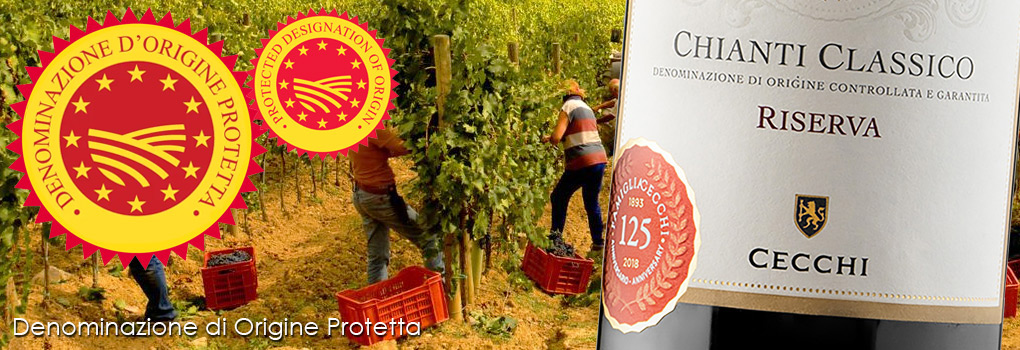
IGT - IGP:
IGT is the 3rd Tier - Level in the Italian Wine Classification System, which stands for Indicazione Geografica Tipica (Typical Geographical Indication). An IGT classed wine is ‘typical’ of a particular geographical local - region. Most IGT wines are simple, made from grapes grown locally and intended to be enjoyed in their youth.
You will find many IGT wines from right across Italy; made from Sangiovese, Primitivo, Pinot Grigio grape varietal to name just a few, all made and ideal for early enjoyment. In general think of them as approachable, easy drinking wine styles - well priced and suitable for everyday pairing with; pasta dishes, pizza and bbq’s, - they typically don't age long, and are ready to be enjoyed on release.
But there are exceptions, as you can always find a small family wine producer, who has some old vines, and winemaking is not their primary business, and they craft quality rustic wines labeled IGT (now IGP) across the country.
The results of these wines have been varied. Some are expensive, but most are affordable wines, a step up from table wines; good for every day drinking. This level of wine will state IGP on the label, as of 2016 there are 118 IGP's throughout Italy.
The IGT classification was brought in as part of the 1992 Wine Legislation's - which came to be known as the 'Goria Law' - after Giovanni Goria, the then Italian minister for agriculture. Its aim was to accommodate those wines which did not qualify for any of the quality wine designations DOC & DOCG. Which are generally intended to protect traditional wines such as Chianti or Barolo. It is considered broadly equivalent to the French vin de pays designation.
IGT wines are listed by the specific region in which they were grown and the grape varietal used that make up 80% of that wine, in that order. This category allowed winemakers to branch out and try new winemaking ideas in new regions. They were given the freedom to create and experiment, which has spawned a whole new style of wines. Many international grape varietals are used, and often vinified in the ‘New World’ style of fruit-forward wines - enjoy.
